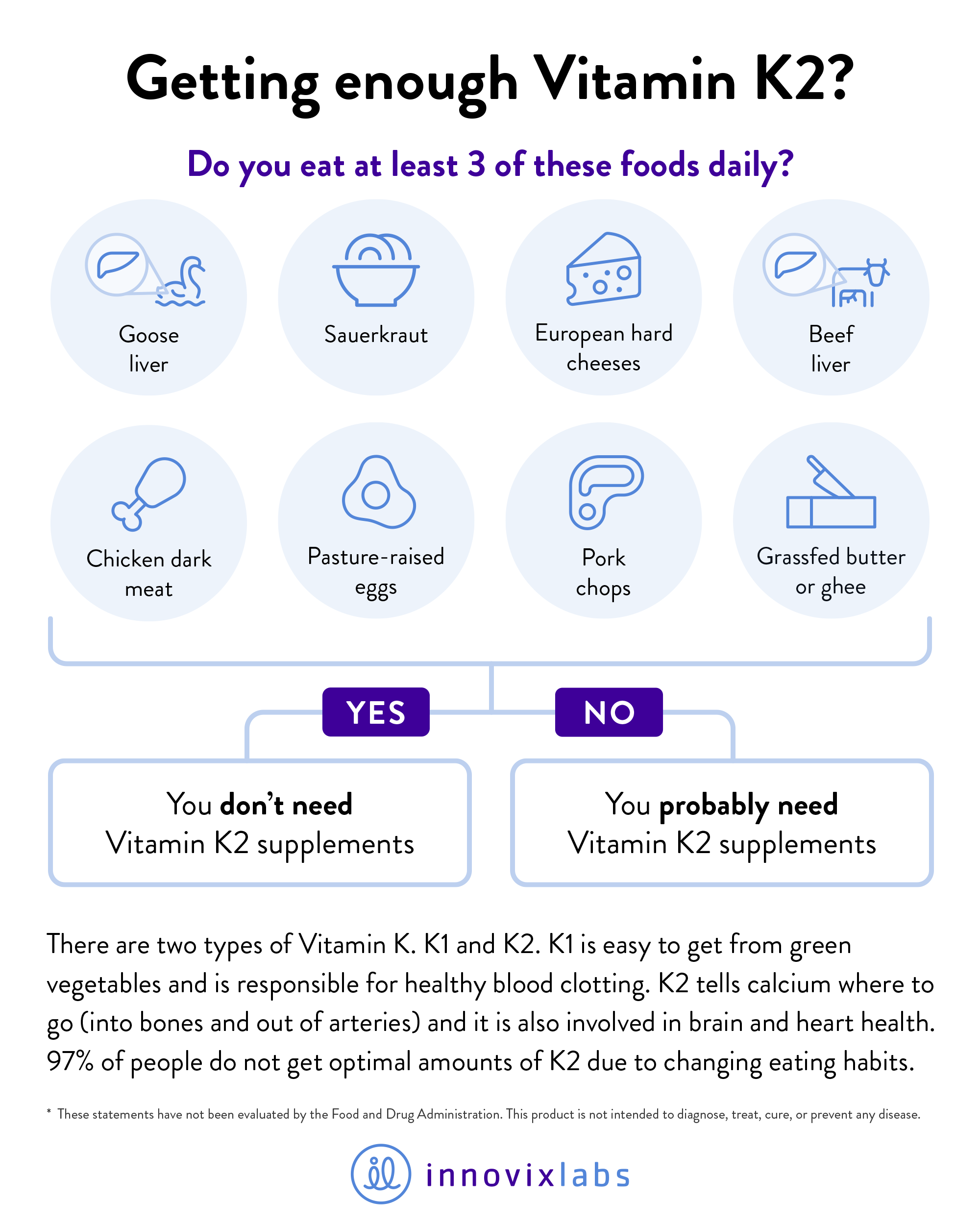
Here’s the thing...
Actually 3 things.
- When we stopped eating liver and sauerkraut a generation or two ago, our collective Vitamin K2 intake dropped because they were both good dietary sources of K2.
- Same thing happened when we switched from full fat foods to low-fat foods
- Vitamin K2 is fat-soluble and so, it’s found in fatty foods.
- Now that 90s-style fat phobia is starting to blow over, we’re slowly starting to eat fatty foods again.
- Popular fat-free greek yogurts have virtually zero Vitamin K2 while full fat greek yogurts have a fair amount of K2.
- But not all fatty foods are rich in K2.
- We don’t eat chicken dark meat – we prefer white meat. Dark meat is where you’ll find Vitamin K2.
OK, one more thing: cheese.
Cheese COULD be a great source of Vitamin K2, but the kind we eat (mozzarella, cheddar, parmesan, Kraft Singles, Velveeta) have hardly any K2 in it.
Kraft Singles and Velveeta are not cheese. Well, we don't know exactly what they are but they are cheese-like products that contains cheese. Don’t. Just…don’t.
If you want to get your K2 from cheese, you need to reach for the more obscure, imported types like Muenster, Jarlsberg, Emmental, Camembert, and Gouda.
Oh, our Wisconsin Gouda has very little K2, but the real thing from Holland does. It has to do with the type and duration of fermentation. You take the Gouda with the bad. Sorry.
How much Vitamin K2 do you need?
Even though there is no official Daily Value or ‘RDA,’ experts recommend 100 to 200 micrograms (mcg) per day.
Turns out that this is not easy to do.
The average American diet is not going to provide 100 mcg of Vitamin K2 daily. This isn’t because the experts want us to eat a very high amount, but because we no longer eat foods that are rich in Vitamin K2.
Our grandparents ate liver and sauerkraut. But not us.
There is research that suggests that 97% of older people fall under deficiency or insufficiency.
If you’re up for eating Natto of Foie Gras, then, sure it is easy.
But for the rest of us eating American fare, you need to consciously work Vitamin K2 rich foods into your routine.
It can be done.
The easiest (and probably tastiest) way is to include chicken dark meat, pork products, and European cheeses.
- Chicken dark meat is high in the MK-4 form of Vitamin K2.
- Pork is high in longer chain MK forms like MK-10 and MK-11.
- European hard cheeses are the richest of these sources with several forms of Vitamin K2.
Makes you look at a Ham & Cheese sandwich differently, doesn’t it?
But that’s exactly the thing – we have been told to choose chicken breast meat over dark meat because it is supposedly healthier.
Eating ham and cheese daily also goes against what we were told about healthy eating.
You may not need 200 mcg daily. Even if you don't get to half that, if you have a choice between chicken white meat and dark meat, go for the dark.
If you can afford it, go the Jarlsberg or Gouda instead of Cheddar or Monterey Jack.
Go for full fat greek yogurt over the fat-free stuff.
Small changes make a big difference over time. Generally speaking, if you eat 3 of these foods daily, your K2 needs are probably met.
And if you fall short, there is always K2 supplements.

